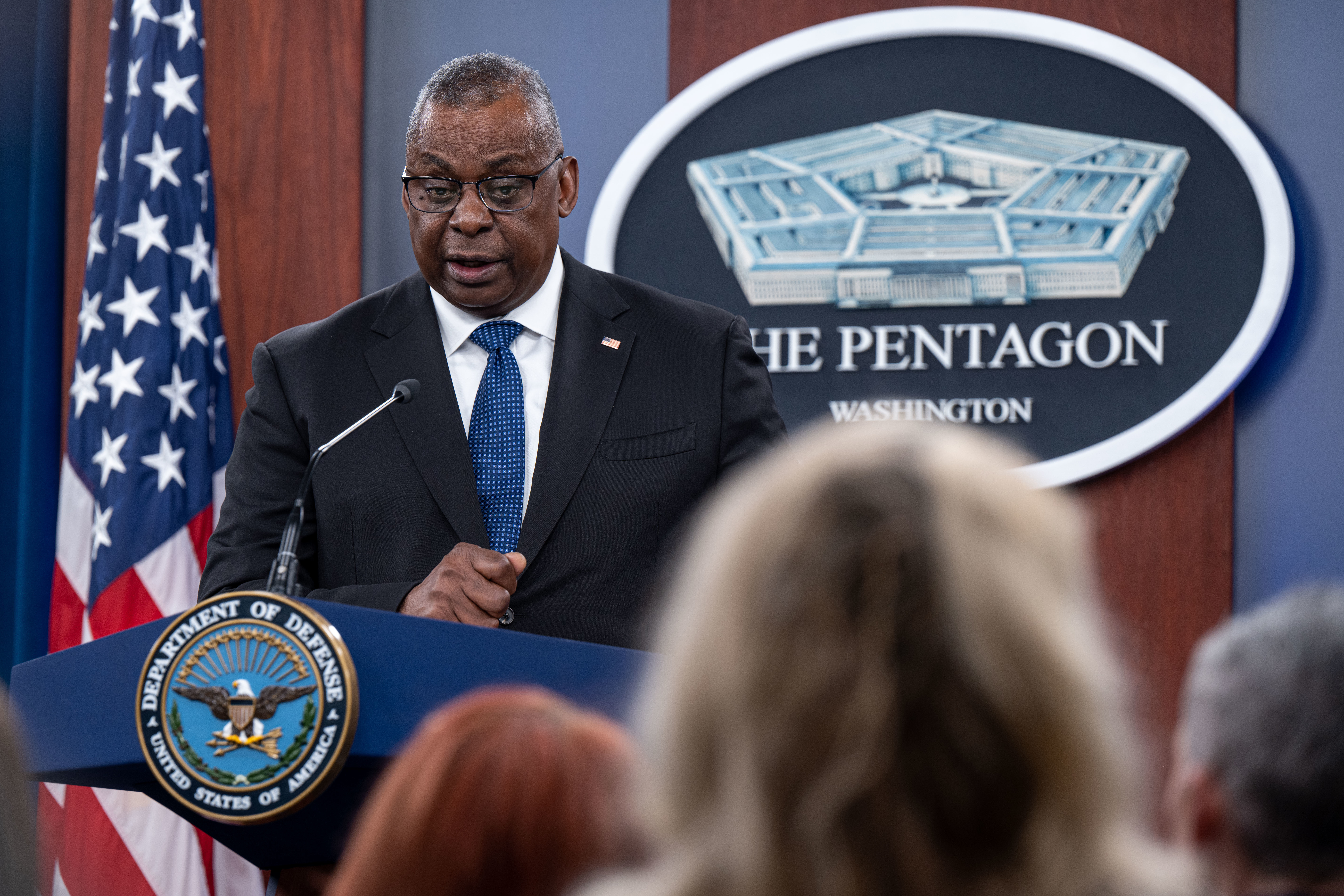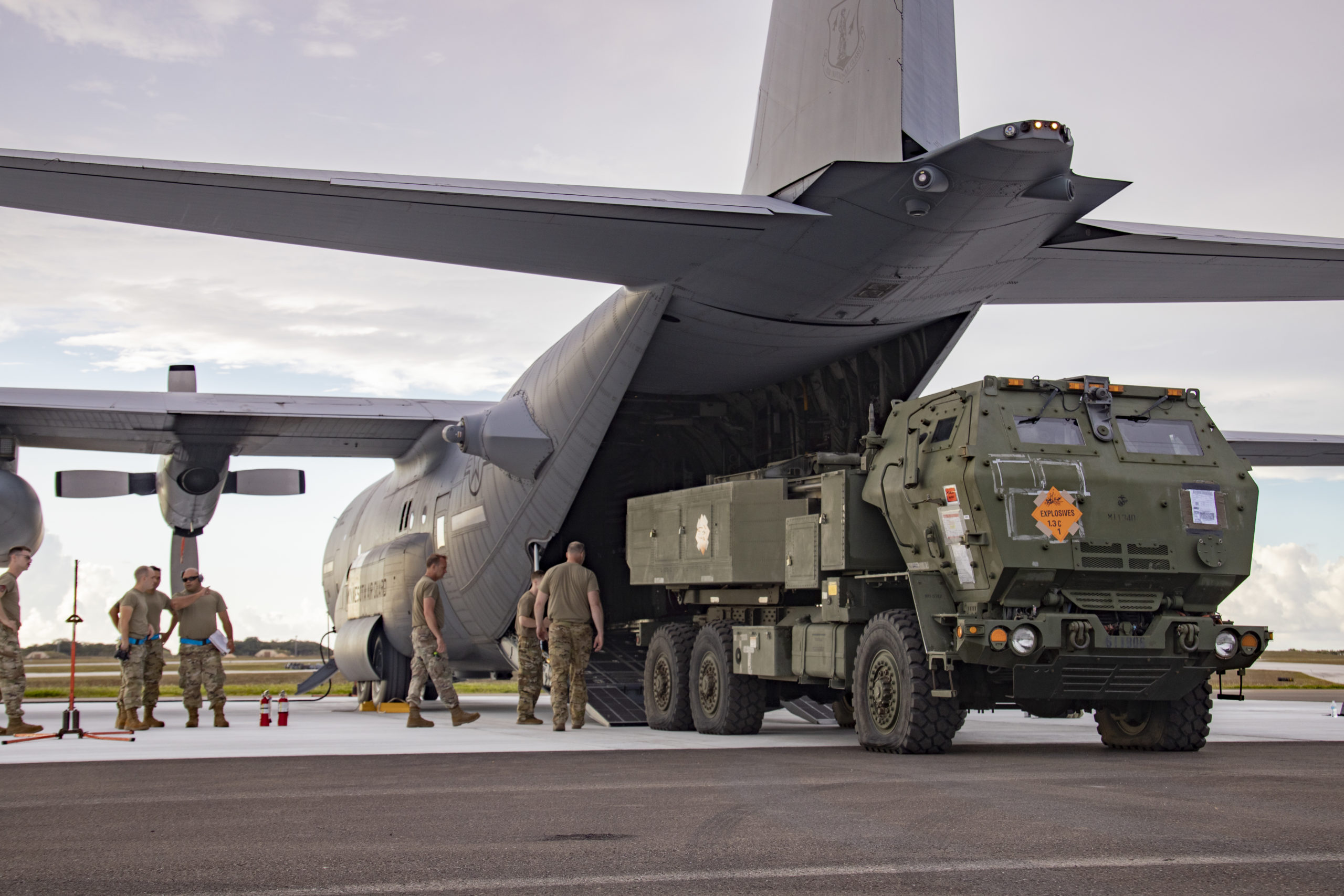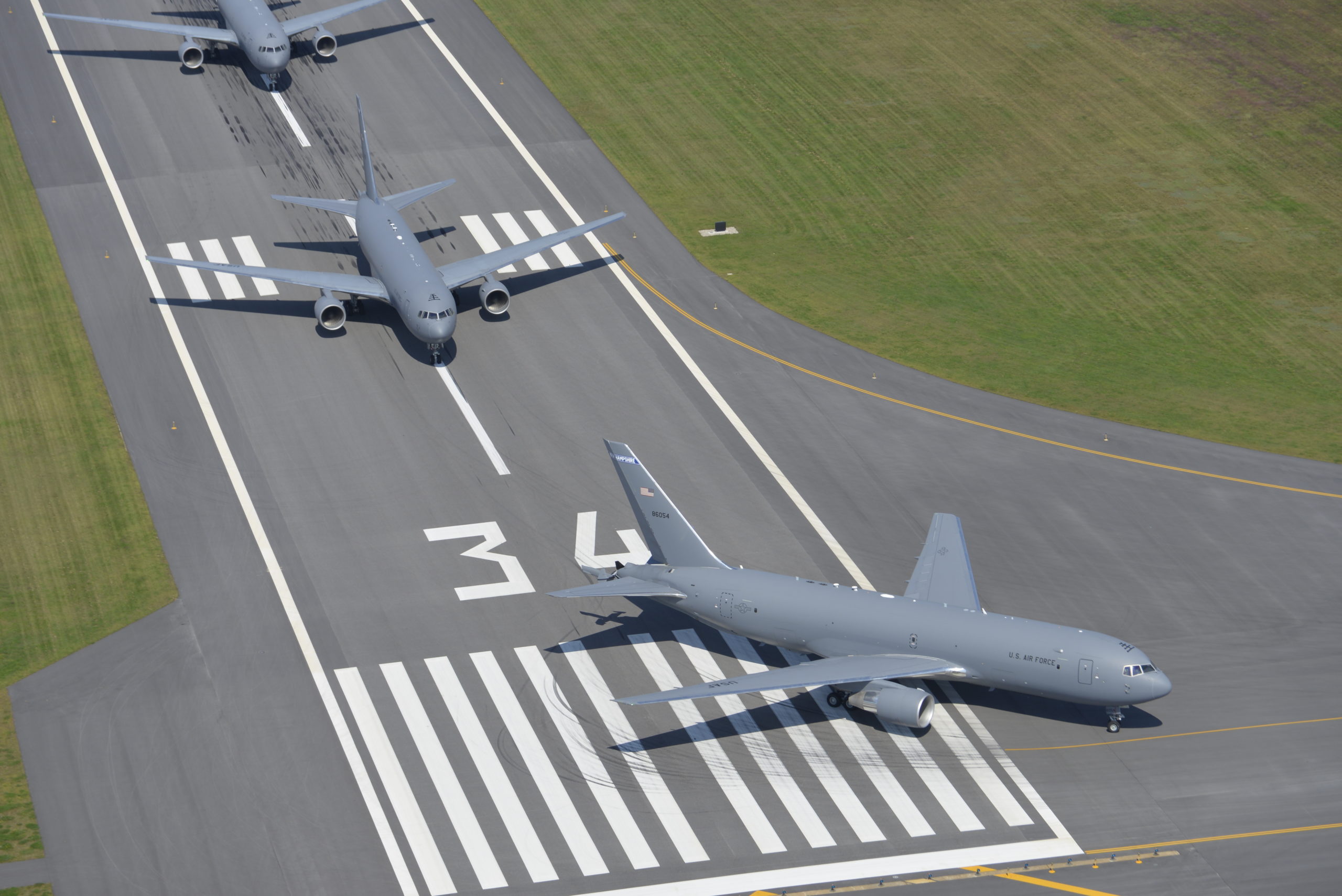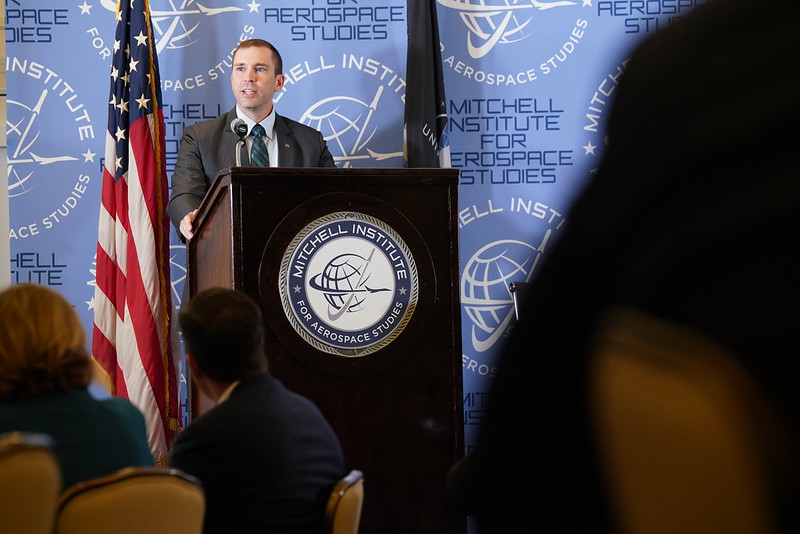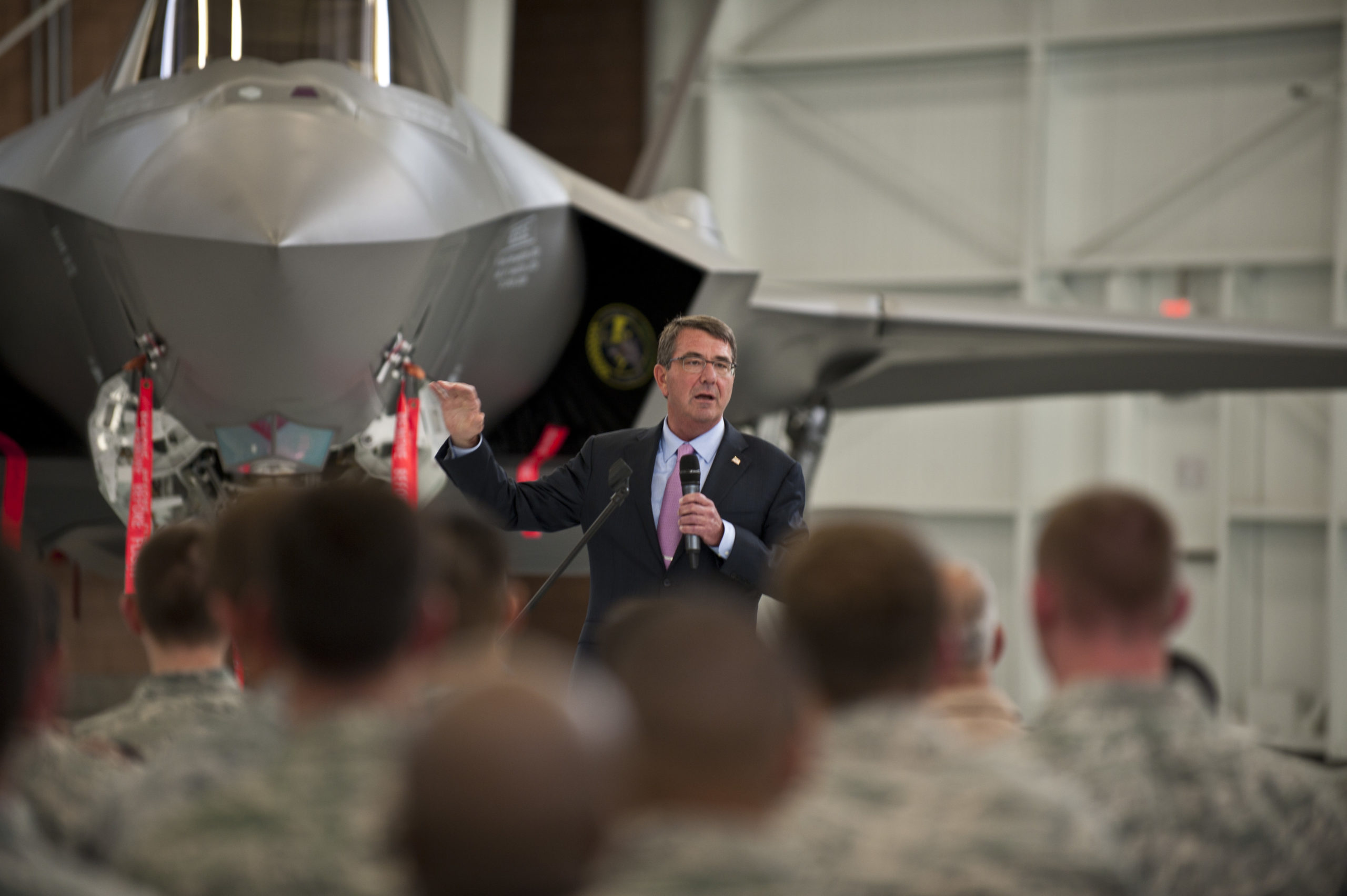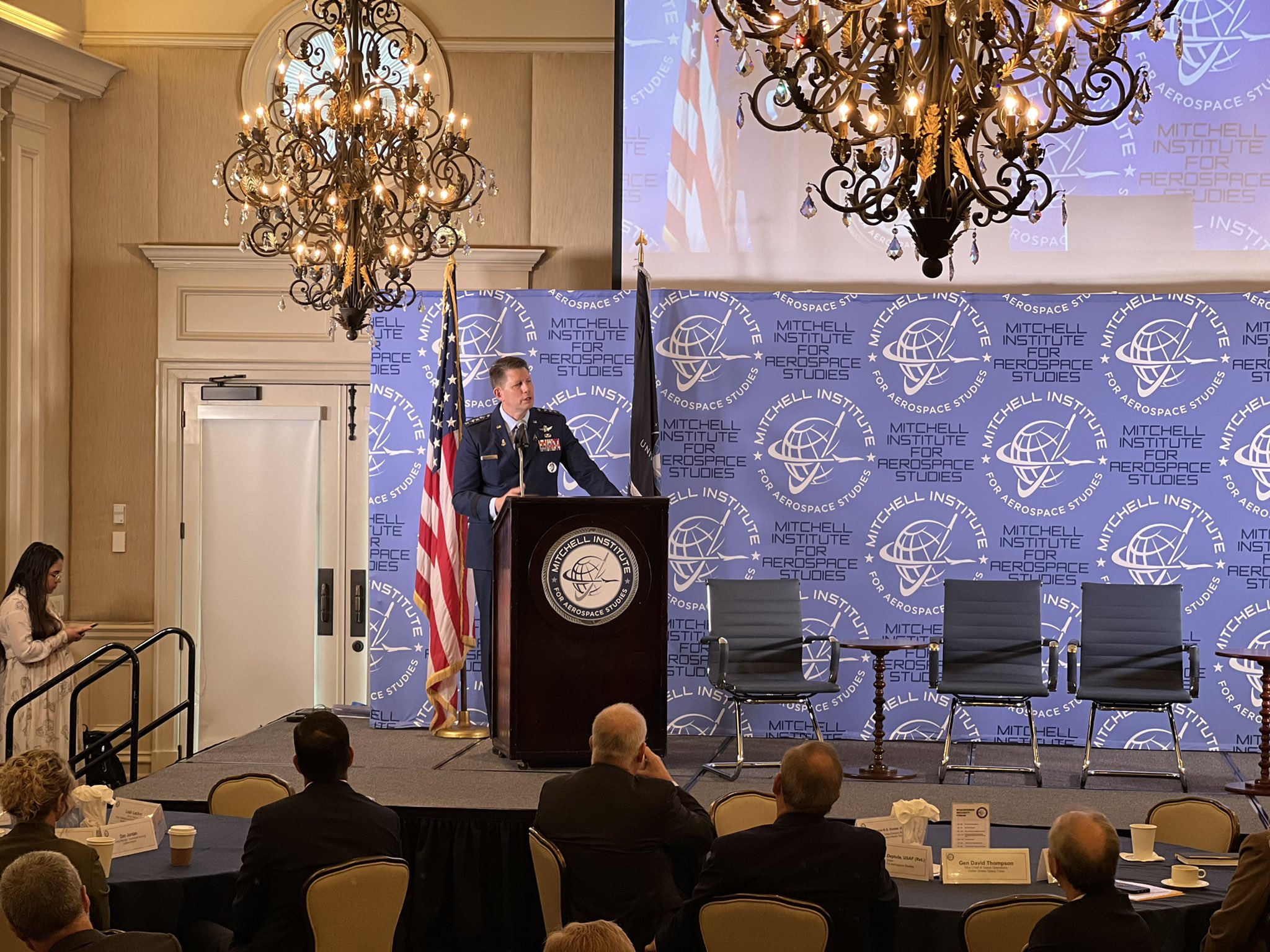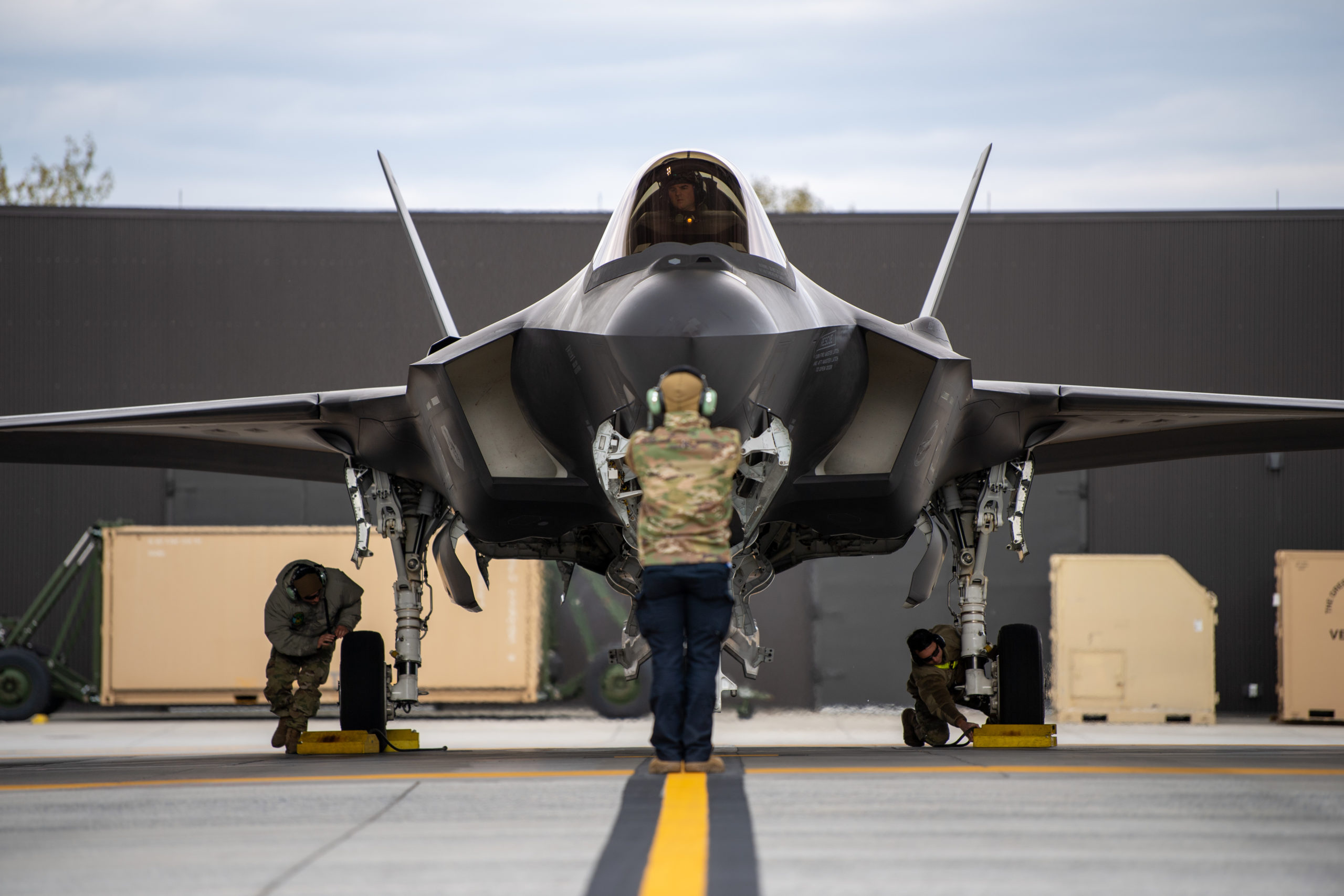The new, public version of the National Defense Strategy, unveiled by Defense Secretary Lloyd J. Austin III on Oct. 27, calls out China as the U.S. military’s “pacing threat” but offers no force-sizing construct nor any specifics about numbers of forces the U.S. needs to carry out its goal of deterring China, Russia, and other potential adversaries.
One of the biggest differences between the 2022 National Defense Strategy and the 2018 version put out by the Trump administration is that the new document specifically names China as the main threat against which U.S. forces must prepare, Austin said, with Russia a secondary but “dangerous” concern. The previous NDS referred to engaging in “great power competition” with near-peer nations.
The People’s Republic of China “is the only competitor out there with both the intent to reshape the international order and, increasingly, the power to do so,” Austin told reporters Oct. 27 at the Pentagon. Russia is labeled an “acute” threat, a word Austin said was chosen carefully to explain that while “Russia can’t systemically challenge the United States over the long term,” its “reckless war of choice” against Ukraine “does pose an immediate and sharp threat to our interests and values.”
Austin characterized the Ukraine war as “the worst threat to European security since the end of World War II,” which has made the danger posed by Russia “very clear for the whole world.”
Unlike previous strategies, the NDS rolled out by Austin doesn’t offer a pithy force-sizing construct summary such as “win-hold-win” or the ability to fight two major regional theater wars, and it sets no goals for numbers of Navy ships or other benchmarks of military capability. Defense officials, however, said there are “strong linkages” between the strategy and the fiscal 2023 defense budget request and future investments.
A senior defense official briefing the press ahead of the rollout said the department continues to wrestle with how deterrence will work in a world with three major nuclear and conventional powers. The old models of deterrence in a bi-polar world were developed over decades of study involving academia, he said, so the new model will take some time to develop.
“This is new territory for us,” he said.
As for a force structure model, the official would only say the strategy seeks to answer the question: “How do you successfully fight one adversary while having enough reserve to hold the other at bay?”
Another official said force sizing is being shaped by the Joint Warfighting Concept activities. She said the Marine Corps’ “Force Design 2030” study is a good example of the “creative” work being done in the Pentagon to envision the capabilities needed in the future.
Austin said “we went through a force posture review very early on,” and there are “incremental adjustments from time to time to that force posture.” He said “we have the ability to rapidly deploy capability to Europe—and you saw that exercise at the very beginning of this conflict, as we deployed … heavy forces from the United States to Europe very, very quickly.” This was possible because of the work done in the European Defense Initiative, he added.
“We’re confident that we’ll have … the force to be able to execute our strategy,” he said, adding that “we continue to focus” on recruiting.
The long delay between the “interim” NDS released in 2021, the classified version sent to Congress in March, and the unclassified version released Oct. 27 was attributed to “assessing the calculus” of how things have changed due to the Ukraine conflict, senior defense officials told reporters on background. However, they also said that analysis “validated” the assumptions and concepts developed before the Ukraine war started, and that the NDS has remained largely intact despite it.
The text of the NDS also says that while the U.S. is structuring for deterring China and Russia, it will also be able to undertake smaller military actions without degrading overall deterrence capability.
Austin said the classified version of the NDS “has been our North Star” since it was delivered to Congress and that it provided the foundation for the fiscal 2023 budget. The Pentagon has been “laser focused” on the China threat “since Day 1,” and Austin noted that he set a China Task Force early in his tenure to “produce a range of recommendations to focus the entire department on the China challenge.”
The NDS is also “very clear-eyed about other serious threats,” Austin said.
“That includes North Korea’s expanding nuclear and missile capabilities. And meanwhile, Iran is moving ahead on its nuclear program, supporting dangerous armed proxies and even exporting drones that Russia is using to terrorize Ukrainian civilians.”
The Pentagon also remains “vigilant against the ongoing threat from global terrorist networks as well as from climate change, pandemics, and other dangers that don’t respect borders,” Austin said.
Broadly, the strategy aims, in order, to defend the U.S. homeland; deter strategic attacks against the U.S. and its allies; “prepare to prevail in conflict when necessary”; and “build a resilient joint force and defense ecosystem,” Austin explained.
In service of those goals, the NDS touts “integrated deterrence,” referring to integration among the services, with other parts of government, and with allies and partners.
The strategy calls for investments in capabilities and technologies that “strengthen the 21st century combat-credible U.S. military” by making it “ready to tackle the full range of threats,” Austin said.
Austin also said the NDS “emphasizes the day-to-day work of ‘campaigning,’” which he defined as “conducting and sequencing military activities that, over time, shift the security environment in our favor.” Such activities include U.S. exercises, deployments, and wargames held with allies and partners to cement relationships with them and to develop joint strategies.
The “seamless integration” of U.S. capabilities “across all domains … and theaters … [and] the full spectrum of conflict should make it “crystal clear to any potential foe” that “the costs of aggression against the United States, our allies, and partners far outweigh any conceivable gains,” Austin said.
The new strategy is “nested” within the National Security Strategy released in mid-October and “for the first time” was developed in full integration with those preparing the Nuclear Posture Review and the Missile Defense Review, Austin said.
Much of the NDS is oriented around the world as it will look in 2030. In the introduction, Austin echoes President Joe Biden’s National Security Strategy comment that this is a “decisive decade.” Asked how the NDS is gauged to react to nearer-term threats—particularly the threat of an invasion of Taiwan by 2027, or even next year—a senior defense official said, “we really tried to look across time periods” and to develop a strategy across three successive future years defense plans, which are five years long.
The NDS sets a framework for “evolving” forces and capabilities with new investments, the official said.
“We’ve really tried to balance our approach to risk across all of those and across the entire joint force,” he asserted. “And I think if you look through the … President’s budget submission from last March, I think you’ll see this is pretty nicely done, right? You see a really big emphasis on building a combat-credible force. You also see an emphasis on readiness, for example,” with $135 billion earmarked for readiness accounts.
That shows that the Pentagon is mindful of the need to “manage risk in the near term, as well.”
The fiscal 2023 budget request “included more than $56 billion for air power platforms and systems,” Austin said, “and more than $40 billion to maintain our dominance at sea, and almost $13 billion to support and modernize our forces on land,” with another $34 billion “to sustain and modernize our nuclear forces.”
He also touted that the request includes $130 billion for research and development, “the largest R&D budget number in DOD history.”
The strategy outlines that the Pentagon is also “working in new ways with our industry partners, including by strengthening our supply chains in our defense industrial base,” Austin said.
